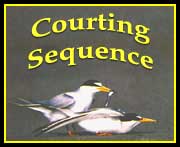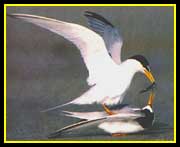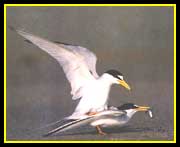


June 1993
Tern Turn-on
Text and photographs by Bruce McMillan
After courtship dances in flight, the moment of truth has come for this pair of least terns on a beach in southern Maine. The male, parading around his mate while flicking his bill, shows off his nuptial gift of a fish, a sand lance. When he finally gets the response he wants, he tentatively approaches the now-crouched female from behind. She turns her head and eyes the fish, and he hops onto her back to offer her the prize. As she grabs it, he lowers himself onto her and releases his sperm into her cloaca.
But is he fast enough? Once she has a firm grasp of the fish, the female sometimes flies off before fertilization has taken place. These birds, however, will try again and again during the breeding season, and if they are lucky, they will produce a chick or two.
For least terns, every new hatchling is important. Once, these terns were a common sight along the Atlantic and Pacific coasts and in the south-central river basins. But overhunting in the late 1800s reduced their populations to dangerously low levels. In the early 1900s, protected by legislation, they made a comeback, but development subsequently destroyed much of their habitat. Today, least terns are endangered. Their nests, exposed scrapes in sand, are vulnerable to being trampled by people and preyed upon by cats, rats, gulls, and dogs. Fewer than 150 pairs of least terns now return to breed in Maine, the northernmost boundary of their range.
©1993 by Bruce McMillan
<> <> <> <> <> <> <> <> <> <> <> <> <> <> <> <> <> <> <>
Home: www.brucemcmillan.com